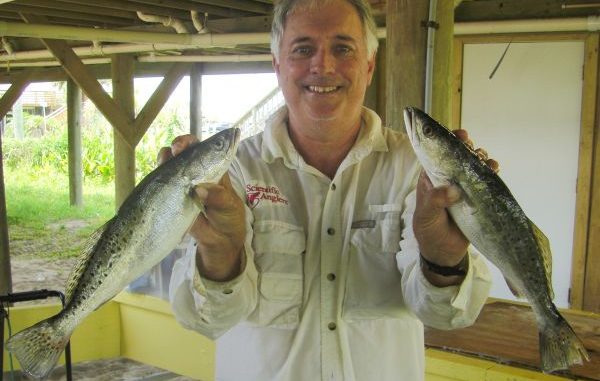
For CCA members hoping to place an entry in the STAR tournament Fly Rod Division, June is the best month to register a larger-than-14-inch trout. As summer wears on, and water temperatures rise, larger specks become more selective in their feeding habits — and less likely to eat flies.
Aim for big specks by tossing poppers from first light to early morning along the edges of shorelines, tidal edges and drop-offs. Later on, look for schools of mullet and other baitfish, and toss large clousers and seaducers using an intermediate line.
For school trout, try a clouser or charlie suspended 3 feet or so below a VOSI — the fly-rodders popping cork — over oyster reefs in lakes and bays.
Redfish will also be very active in the ponds around sunrise and on low tide. Small poppers like Dinks and Pete’s Perch Float Popper will entice vicious strikes early. As the day wears on, crab patterns and charlies will be effective.
If all else fails, cast a spoon fly.
By now the Atchafalaya Spillway will hopefully be in great shape for big “stumpknocker” bream. Tony Accardo, one of the pioneers of fly fishing in our state, had a great technique for locating these fish: He used a popping bug on the surface, with a ligon spider fly tied off the popper on a dropper line.
Flyrodders in New Orleans and Jefferson parishes were reporting larger-than-usual numbers of Rio Grande Perch, possibly due to the mild winter. Catching a one-pound rio on a 3-weight rod is like hooking a wet cat.
These South Texas natives love wet flies and slow-sinking spiders.


